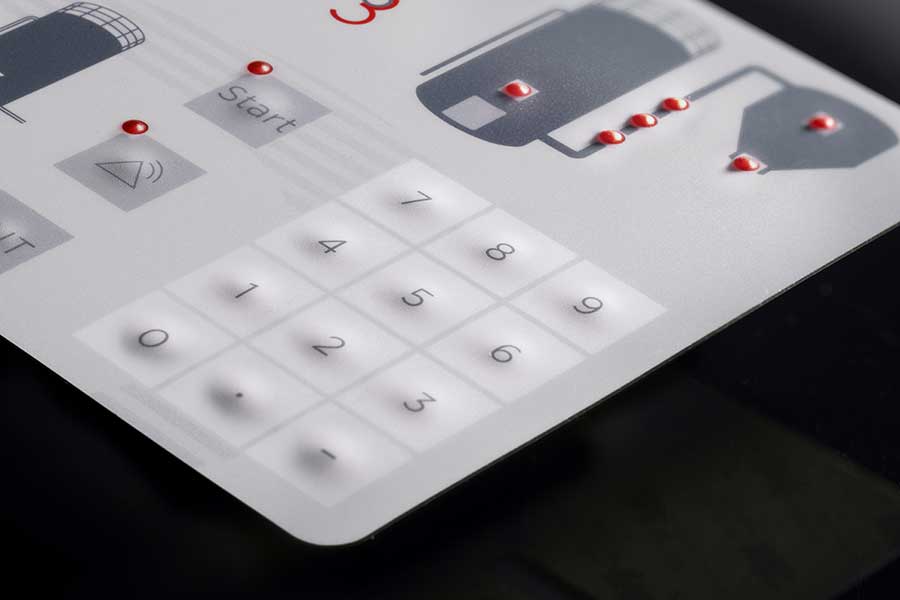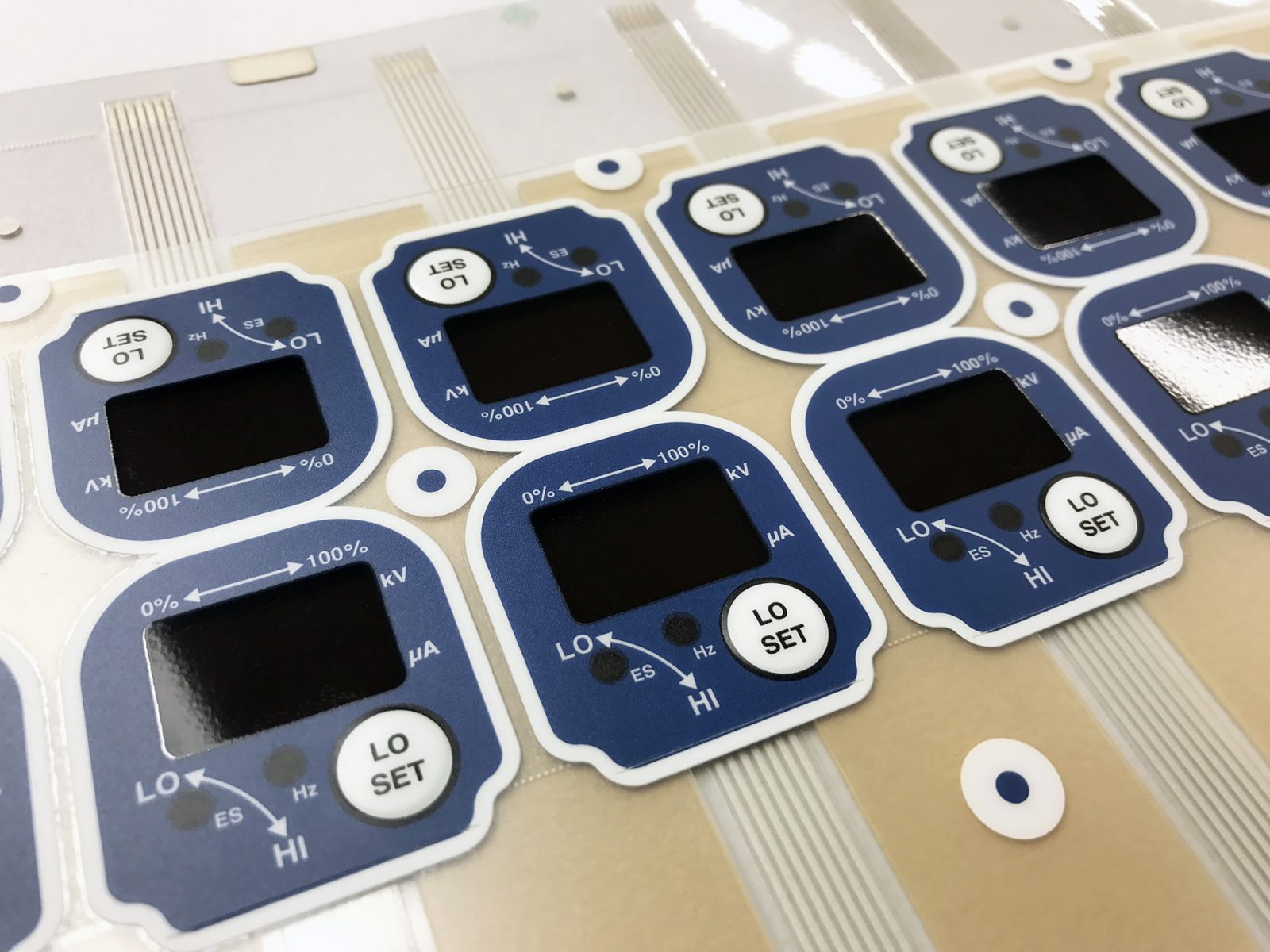Membrane Switches vs. Mechanical Switches: What You Need to Consider
Membrane Switches vs. Mechanical Switches: What You Need to Consider
Blog Article
Membrane Layer Change Modern Technology: The Secret to Trusted and Cost-efficient Interfaces
Membrane layer switch modern technology has actually become a critical part in the style of interface, supplying both dependability and cost-effectiveness across a diverse series of applications. Its robust construction makes sure resistance to ecological obstacles, while the flexibility in style permits for tailored solutions that meet specific market demands. As we explore the complex advantages of membrane buttons, their possibility for development questions about future applications and developing patterns. What does the following chapter hold for this modern technology in a progressively electronic landscape?
Comprehending Membrane Change Technology
Membrane button modern technology is an extensively utilized interface solution in various digital tools, providing a smooth mix of functionality and design. This technology incorporates multiple layers of materials, usually consisting of a visuals overlay, spacer layer, and a circuit layer. The graphic overlay presents the interface elements, while the spacer layer divides the circuit layer from the overlay up until an individual activates a switch.
When pressure is related to the overlay, the circuit layer finishes the electric circuit, sending a signal to the tool. This mechanism enables numerous arrangements, consisting of tactile feedback and backlighting options, boosting user interaction. Membrane buttons are commonly made using resilient products such as polyester or polycarbonate, making sure long life and resistance to ecological elements like wetness and dirt.
The flexibility of membrane layer switches over allows their application in diverse sectors, including medical gadgets, customer electronic devices, and commercial controls. Their small layout permits integration into space-constrained settings, supplying a reliable interface without compromising aesthetic allure. Understanding the complexities of membrane button innovation is necessary for makers and designers looking for to produce reputable and effective human-machine interfaces.
Trick Benefits of Membrane Layer Switches
While numerous interface solutions exist, membrane layer switches offer distinct benefits that make them a recommended selection in many applications. One of the main advantages is their resilience; membrane layer switches are developed to hold up against rough ecological problems, consisting of wetness, dust, and temperature changes, making sure resilient performance. This resilience dramatically minimizes the requirement for frequent replacements, therefore decreasing general upkeep costs.

Additionally, membrane layer buttons are light-weight and compact, making them appropriate for applications where room is restricted. Their low-profile style adds to a streamlined appearance without compromising capability.
Cost-effectiveness is additionally a significant advantage, as the production process for membrane layer changes often tends to be less expensive compared to conventional mechanical switches. This price, integrated with their reliability and convenience of installment, placements membrane layer changes as a practical solution for a wide variety of sectors seeking reliable and efficient customer interfaces.
Applications Throughout Different Industries
How do membrane switches adapt to the varied requirements of numerous industries? Membrane switch modern technology is increasingly identified for its versatility, making it ideal for a wide variety of applications throughout numerous sectors. In the medical field, membrane layer switches are made use of in diagnostic tools and patient surveillance gadgets, where their durability and convenience of cleansing are important for preserving hygiene standards. The automotive market uses these buttons in dashboards and control board, providing a structured visual while making certain straightforward operation.
In consumer electronic devices, membrane switches give a compact option for remote controls and home devices, improving user experience via user-friendly design. In addition, the industrial sector leverages membrane layer switches for equipment control board, taking advantage of this page their resistance to rough environments, such as dampness and dust.
Armed forces and aerospace applications additionally utilize membrane switches for their reliability and capacity to stand up to extreme conditions, ensuring operational performance in essential scenarios. The food and beverage market takes on these switches for automated systems, where hygiene and convenience of procedure are paramount (membrane switch). Eventually, membrane switches are customized to fulfill the unique demands of each industry, showing their necessary duty in modern technology interfaces
Design and Customization Choices

In the world of membrane layer switch technology, layout and modification options play an essential function in enhancing capability and individual communication. These buttons can be customized to meet details operational needs and aesthetic preferences, making them flexible parts in different applications.
Among the primary modification alternatives is the layout of the switch itself, which can be designed to suit one-of-a-kind interface and ergonomic considerations. By changing the form, size, and plan of switches, producers can develop intuitive layouts that facilitate ease of use. Furthermore, the unification of various shades and visuals overlays allows for branding and enhanced exposure, ensuring that customers can swiftly recognize functions.
Moreover, membrane layer switches can be engineered with various responsive comments systems, such as increased buttons or audible clicks, to enhance the user experience. Various products can also be picked for toughness and environmental resistance, dealing with factors such as wetness, temperature level variations, and chemical exposure.
Inevitably, the considerable layout and modification options available in membrane button innovation encourage businesses to produce tailored solutions that not just satisfy practical demands try this website yet likewise line up with their branding and functional requirements.

Future Patterns in Membrane Switches
As membrane button technology proceeds to evolve, future fads are progressively concentrated on boosting user experience and incorporating innovative performances. One significant fad is the combination of touch-sensitive and capacitive innovations into conventional membrane layer switches. This advancement enables more user-friendly customer interfaces, giving tactile feedback while preserving a smooth design.
Another emerging fad is the usage of environmentally pleasant materials, driven by the growing demand for lasting manufacturing techniques. Makers are looking for to decrease their carbon footprint by utilizing recyclable substrates and low-impact inks, straightening with international sustainability objectives.
Additionally, the surge Check This Out of the Net of Things (IoT) is motivating the consolidation of smart attributes into membrane buttons. Improved connection alternatives will allow devices to communicate with each other, enabling seamless assimilation into broader systems.
In addition, improvements in printing technologies, such as electronic printing, are enabling higher design adaptability and modification. This enables makers to generate intricate designs and vivid shades cost-effectively.

Conclusion
In verdict, membrane layer button modern technology represents an essential innovation in customer interface layout, providing considerable benefits in resilience, modification, and cost-effectiveness. As developments continue to emerge, particularly in touch-sensitive interfaces and sustainable products, the potential for membrane switches over to enhance user experience and functionality remains encouraging.
Report this page